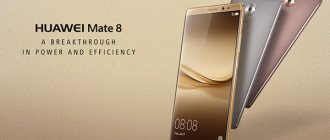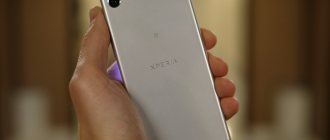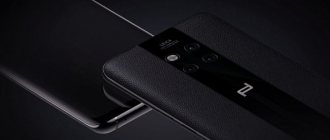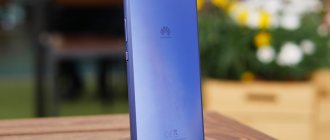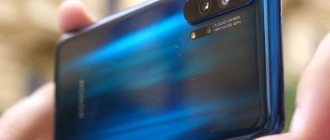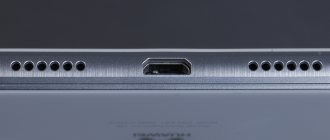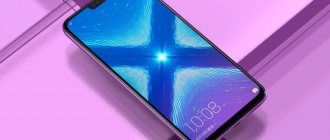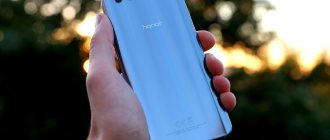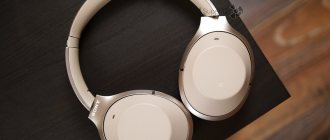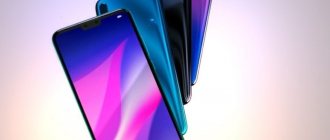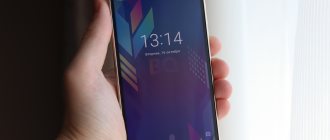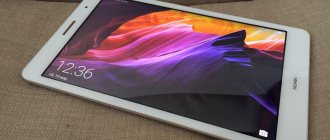Huawei Mate 20 Pro has attracted a lot of attention. But what if you can't afford to buy it? The price of the flagship is rather high, but there is a way out. You can take a model that runs on the same powerful processor and has almost all the features of the flagship, with the exception of a few compromises. For you Huawei Mate 20.
Looking ahead, I’ll say: the Mate 20 version differs from the Pro in that it has an LCD display rather than an AMOLED; there is no 3D facial recognition and fingerprint scanner under the screen, and there is no 40-watt charging. Well, the body is a little thicker. If you're wondering, is the Mate 20 worth buying? Believe me, it's worth it.
You can buy Huawei Mate 20 on AliExpress
Look
Specifications Huawei Mate 20
| Display | 6.53 inch IPS panel with 2244 x 1080 resolution and 381PPI, DCI-P3 |
| CPU | Huawei Kirin 980 8-core: 2? 2.6 GHz, 2? 1.92 GHz and 4? 1.8 GHz |
| Graphic arts | Mali-G76 |
| RAM | 4 GB or 6 GB |
| Storage | 128 GB, NM memory card slot supporting 256 GB |
| Battery | 4,000 mAh |
| Cameras | Rear: 12 MP wide-angle (f/1.8) and 16 MP ultra-wide-angle (f/2.2) + 8 MP telephoto lens (f/2.4). Front: 24 MP (f/2.0) |
| Net | HMA-L29: Main SIM: 4G LTE TDD: B34/B38/B39/B40/B41 4G LTE FDD: B1/B2/B3/B4/B5/B6/B7/B8/B9/B12/B17/B18/ B19/B20/B26/B28 3G WCDMA: B1/B2/B4/B5/B6 (Japan)/B8/B19 (Japan); 3G TD-SCDMA: B34/B39 2G GSM: B2/B3/B5/B8 (850/900/1800/1900 MHz) Secondary SIM: 4G LTE TDD: B34/B38/B39/B40/B41 4G LTE FDD: B1/B2/B3/B4/B5/B6/B7/B8/B9/B12/B17/B18/B19/B20/B26/B28 3G WCDMA: B1/B2/B4/B5/B6/B8/B19 2G GSM: B2/B3/B5/B8 (850/900/1800/1900 MHz) HMA-L09: 4G LTE TDD: B34/B38/B39/B40/B41 4G LTE FDD: B1/B2/B3/B4/B5/B6/ B7/B8/B9/B12/B17/B18/B19/B20/B26/B28 3G WCDMA: B1/B2/B4/B5/B6 (Japan)/B8/B19 (Japan); 3G TD-SCDMA: B34/B39 2G GSM: B2/B3/B5/B8 (850/900/1800/1900 MHz) |
| connection | Wireless AC Wave 2, Bluetooth 5.0, BLE, SBC, AAC, aptX, aptX HD, LDAC and HWA Audio, USB Type-C (5 Gbps), IR port |
| Safety | Fingerprint scanner (rear), face recognition (front) |
| Headphone port | Yes |
| Dimensions | 15.24?7.7x0.81 cm |
| Weight | 187.78 g |
| System and software | Android 9.0 Pie with EMUI 9.0 |
| Colors | Midnight blue, black, green, dusk, pink |
Main camera
The main camera has a dual-tone flash, Leica optics and three lenses: 12 MP wide-angle lens (f/1.8, 27 mm) + 16 MP ultra wide-angle lens (f/2.2, 17 mm) + 8 MP telephoto lens (f/2.4, 52 mm).
The camera has the following modes:
- “Aperture”, with regulation of blur strength, or automatic control;
- “Night” with increased ISO level and shutter speed;
- “Portrait” – imitation of the Bokeh effect when capturing a “live” face;
- Standard “Photo” with bracketing;
- “Pro” – manual control of ISO, shutter speed, exposure, focus mode (AF-S, AF-C, MF available) and color temperature.
The additional “More” tab includes the following modes:
- “Slowdown”;
- "Panorama";
- “Monochrome mode”;
- “Augmented reality” (analogous to Animoji from iOS);
- “Light” (selecting color balance);
- HDR (deep contrast);
- “Time span” (increased playback speed);
- “Filter” (filter selection);
- “3D panorama” (four-axis overlay of images shot in a circle and from top to bottom with beaty effects);
- “Watermark” (text overlay on the resulting image);
- “Documents” (document analysis, adjustment and export to office applications);
- “Load” (loads additional modes, if any; it is assumed that they will be added).
We decided to compare photos without using light filters in RAW mode (with professional tools), HDR and photos with manual or automatic focusing.
Warning: Huawei RAW photos are compressed to 5 MB using automatic or manual converters, so as not to “burden down” the site with a large file weight.
Of course, the first thing we’ll do is take a photo with the bokeh effect using portrait mode:
To write that this is a real masterpiece is to say nothing. The brass portrait of the “interlocutors” is so bright and expressive that I want to believe that I took this photo with a DSLR. Perhaps a professional photographer will find shortcomings, but for the average person, for someone who likes to shoot with a mobile camera, this result seems something beyond the pale.
This is ultra-wide-angle photography , which captures another 30% of elements not included in the frame:
In conventional cameras, the loss of sharpness and noise level can reach up to 30-35%, but Huawei, with the help of software tricks, was able to reduce this percentage to 5% in the daytime, and in the evening - no more than 15%.
An example of a 2x frame enlargement via software zoom :
There is almost no noise, the exposure triangle (ISO, aperture and shutter speed) is at an excellent, stable setting. True, in automatic mode some loss of sharpness is noticeable, and the photo is too overexposed. But in fairness, it is worth considering the size of the matrix from which “all the forces were pulled out.” And no one canceled the “Pro” mode to set everything up yourself.
An example of the second shot, where the lack of optical stabilization is combined with hand shake and the corresponding quality of high zoom:
In the following image, the main 12-megapixel camera makes a subtle re-sharpening and increases the dynamic range with a smooth loss of quality as the image is enlarged:
The main work is done by autofocus, which at the edges is distinguished by a decrease in the degree of sharpness and a “soapy” tint. Moreover, manual adjustment is almost always required to select the correct focus area, so as not to blur the overall background.
The following frame illustrates the Galitsky stadium in the park of the same name:
The RAW image shows the correct white balance and the correct shade of the grass with the sky. Excellent and unobtrusive sharpening that does not spoil the overall quality.
Using a telescopic camera with a resolution of 8 megapixels and 2x optical zoom :
In the distance, there is a slight deterioration in quality, but up close the resulting frame does not lose fine details.
The “Panorama” effect works without explicitly gluing frames together and has smooth transitions across the entire area of the photograph:
The neural networks used when operating the camera are responsible for clearer aperture parameters, autofocus on the desired object, white balance and even light. However, the camera's calculations don't work as smoothly as we'd like, so it's best to use manual settings.
Autofocus has several types of capture: phase, laser and contrast. For a sharper HDR image, depth of field calculation is involved, again closely related to neural calculations.
Smartphone design
Unlike the convenient and easy-to-use Mate 20 Pro, the younger model for some reason turned out to be slightly larger in all sizes. It is comparable to the flagships iPhone XS Max and Google Pixel 3 XL. As a result, due to the excess width, the phone is inconvenient to use with one hand. However, we get a larger display, which is good.
The manufacturer also offers several different color options for the Huawei Mate 20, each of which is eye-catching – like “twilight” or “midnight blue.” Although, the second option can hardly be classified as blue. It's more of a violet-lilac color, but it's all a deep gradient color. You will pay no less attention to the teardrop-shaped cutout of the screen, which houses only the front camera lens. All other sensors are hidden closer to the narrow frame above the display.
The body was made as premium as possible - only glass and metal. It feels like fingerprints will quickly collect on such a smartphone. By the way, unlike the Pro version, the Mate 20 has protection according to the IPX5/IPX3 standard, that is, the device is not afraid of dust and splashes. On the right side there is a volume rocker and a power button. They are different sizes, so you won't confuse them. By the way, even the color of the power button was made to stand out – it is reddish.
A hybrid module for nanoSIM cards is hidden on the left side. But there is a caveat here, and an important one. Huawei decided to make a strange innovation; here we get a slot for Huawei Nano SD cards, which are not found on sale. Yes, the nanomemory card is the same size as nanoSIM, but is it worth the effort?
At the bottom of the case there is a USB Type-C 3.1 connector, and next to it there are 2 microphones and a speaker. By the way, the speaker can work in tandem with a conversational speaker, creating stereo sound. The top edge also has a pair of microphones, a 3.5 mm audio jack and an infrared port.
The main triple camera with a dual-tone LED flash is located on the rear panel and is designed in the form of a square with rounded corners. It turned out nice, but large-scale; a laser rangefinder (next to the flash) and a fingerprint scanner are installed right there. Of course, there is also the Huawei logo - it is located on the panel at the bottom.
Camera
Huawei Mate 20 was equipped with a triple main camera, which, although inferior to the camera of the Mate 20 Pro, still shows itself as one of the top camera phones.
The capabilities of the Mate 20 camera were enough for me almost always during my trip to Moscow (I visited there for the first time and was impressed), I didn’t even have to take a camera.
The characteristics of the camera are as follows:
- 12 MP wide, f/1.8 aperture, 27mm focal length, 1/2.3″, 1.55 microns each pixel;
- Ultra-wide 16 MP, f/2.2 aperture, 17mm focal length, 1.0 micron each pixel;
- 8 MP telephoto, f/2.4 aperture, 52mm focal length, 1.0 micron each pixel.
None of the cameras have optical stabilization, which is sad, but in general you can get cool pictures without it, the main thing is to understand the weaknesses of the Huawei Mate 20's triple camera and work around them. This is what I did, walking around Moscow for three days in a row.
The main wide lens shoots at the level of the Huawei P20 camera, i.e. very good (no worse than the iPhone XS or Galaxy Note 9), or even better if you shoot in HDR or Night Mode. I took pictures with this camera mainly in difficult lighting conditions (twilight, night, indoors). This is the most powerful photo module of the Huawei Mate 20 in terms of quality.
Ultra-wide was used in scenes where scale needs to be shown, but due to the small pixels of the matrix (only 1 micron), acceptable quality can only be achieved in those scenes where there is enough light.
Huawei Mate 20 TV But again, its capabilities are only sufficient in scenes with good light. As soon as there is little light, the main zoom is immediately activated and from it the camera application makes an electronic zoom up to 52 mm equivalent.
This is how Auto mode works, if you don’t want it to decide for you, switch to Pro, everything is fair there, which lens is active is what works.
Take a look at a few photos taken on Huawei Mate 20, which I have already processed and published on my Instagram. This will help you understand the capabilities of the triple camera:
View this post on Instagram
That day in Moscow it was mega-sunny and very cold.
